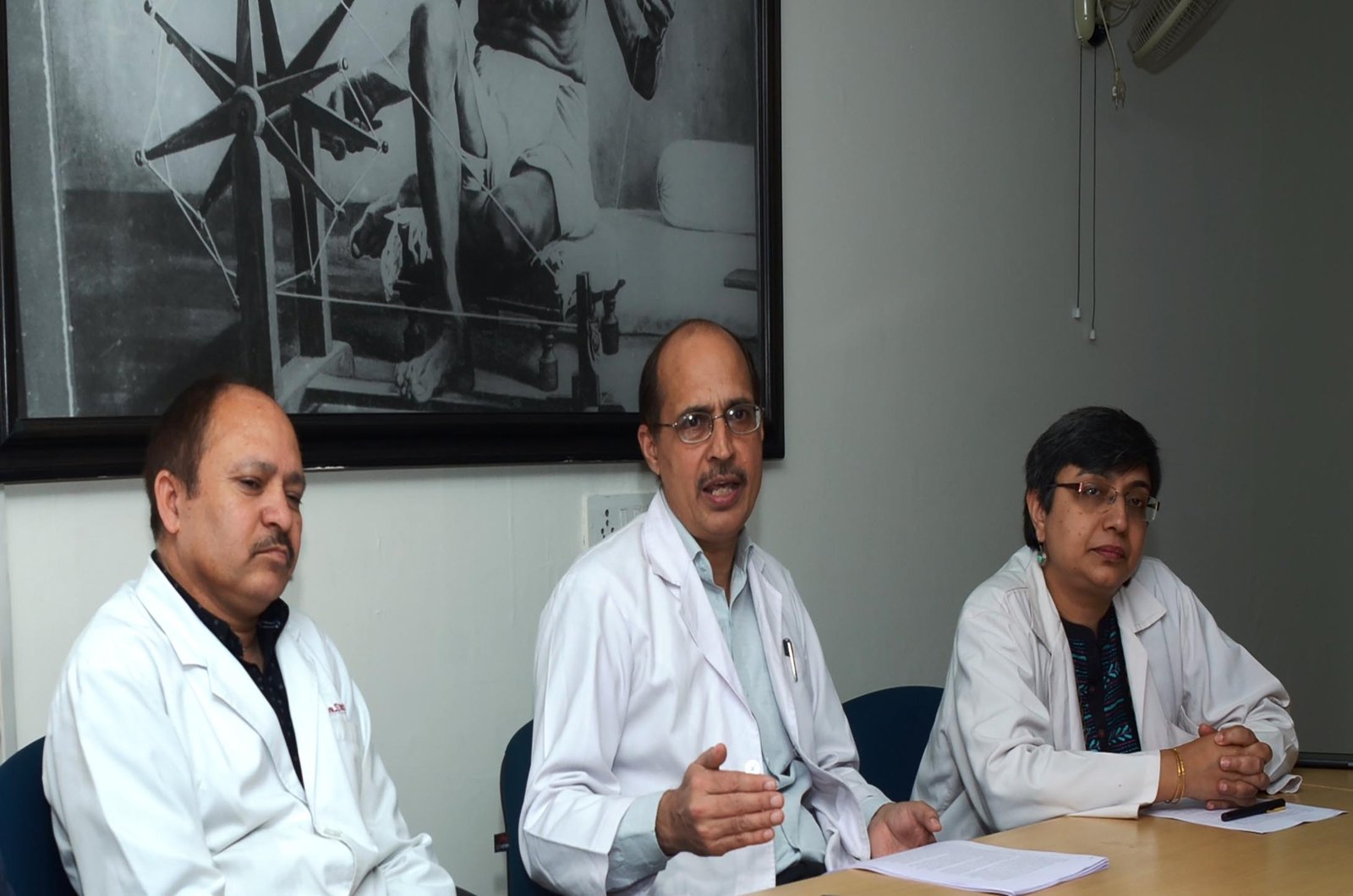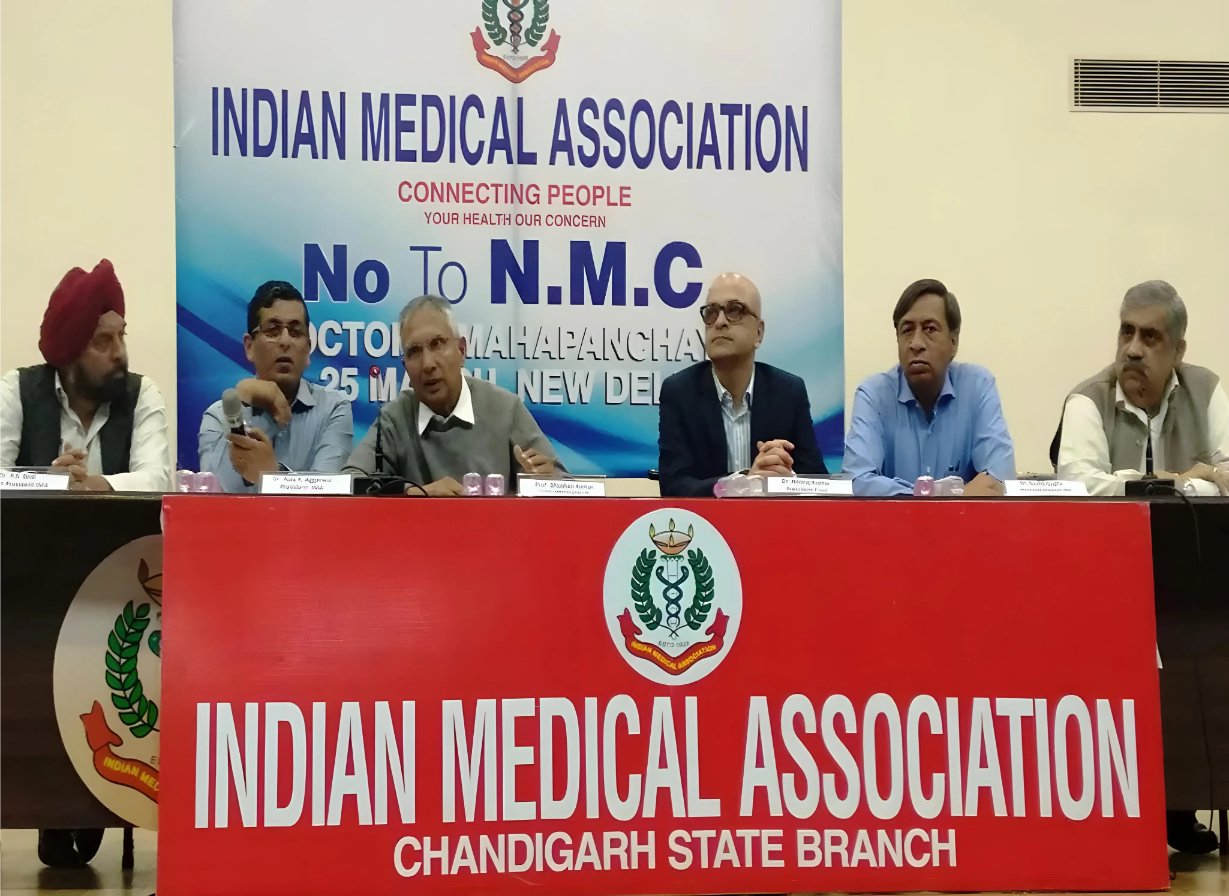Crossed 40 years of age. Time for most of us to start wearing spectacles. Along with getting our eyesight checked, it is also time to get ourselves examined by an eye specialist for a silent disease which has no defined symptoms, but which, if left undetected, has the potential to severely impair our vision, and even leave us completely blind for life. The common and incurable disease of the eye – Glaucoma, or ‘Kala Motia’ – causes vision loss due to slow and progressive damage to the optic nerve, which relays images captured by the eyes to the brain for recognition and further interpretation. This is mostly caused by normal pressure inside the eye balls, which keeps them in proper shape and does not allow them to collapse, rising too high.
Giving media persons insight into the disease on the eve of Glaucoma Awareness Week being observed by the PGI from March 11, experts from the Advanced Eye Center in PGI said Glaucoma is third major cause of blindness after cataract and uncorrected refractory errors. Blindness due to cataract and refractive errors is reversible; in contrast, blindness due to glaucoma is irreversible. Glaucoma cannot be cured but blindness due to glaucoma can be prevented in majority of the cases by timely diagnosis and treatment.


Photo By : Life In Chandigarh
Sharing the PGI’s experience in tackling the disease, Prof SS Pandav and his team of doctors informed that the premier institute has 45,000 registered glaucoma patients from the region. On any working day the department of ophthalmology attends to 150-200 existing and new patients of Glaucoma. “Our experience shows that every month 900-1,000 new patients of the disease are added to the already huge list of existing patients, which means more than 10,000-12,000 new patients are being added every year,” Prof Pandav added.
As Glaucoma has no symptoms, it mostly remains undetected until it is too late. It is estimated that 90% of Glaucoma patients in our country remain undiagnosed which puts a large population at risk of going blind.
Since awareness is the key to detect Glaucoma early, the Advanced Eye Center in association with Eye Research Foundation and Glaucoma Support Group, Chandigarh, regularly organizes awareness programmes for the public. Glaucoma Support Group at Advanced Eye Center has been active in this field for the last 10 years, and has conducted a number of Glaucoma educational campaigns for the public as well as for the health care professionals. Apart from a number of public lectures, television and radio talks, street plays, Glaucoma musical concerts and walks, the Group has organized 10 Glaucoma workshops for the general ophthalmologists to upgrade their Glaucoma diagnostic and treatment skills, in the last three years alone.
Who is at risk of developing Glaucoma? Glaucoma can occur at any age but generally it affects people above 40 years of age and the risk increases as the age increases. People over 60 years of age are six times more at risk than population at large. People with high ‘eye pressure’ and people with a family member having Glaucoma are particularly at risk of developing the disease. Certain ethnic groups and people with diabetes are also prone to develop Glaucoma.
Can it be prevented? All Glaucomas cannot be prevented, but visual impairment and blindness can be prevented by early detection and treatment. Since Glaucoma may not have any symptoms, periodic eye checkup is of utmost importance for early detection. Some people may see colored halos around lights and have mild blurring of vision in the evenings. Such people should consult an eye specialist without delay. Otherwise, whenever you visit your eye specialist for reading glasses, you must insist on checkup for Glaucoma which includes measuring ‘eye pressure’, examining the optic disc for any damage and evaluation of drainage angles of the eye. Opticians who make glasses for you are generally not trained to do this.
How is Glaucoma treated? The aim of treatment is to prevent further damage and preserve the remaining visual function. This is best achieved by reducing ‘eye pressure’. In most cases ‘eye pressure’ can be reduced by using eye drops. As Glaucoma is a chronic disease, the treatment is life-long. The number and nature of eye medication is likely to change over a period of time, therefore, regular periodic checkups are important. Some people need lasers or surgery to control the disease.


